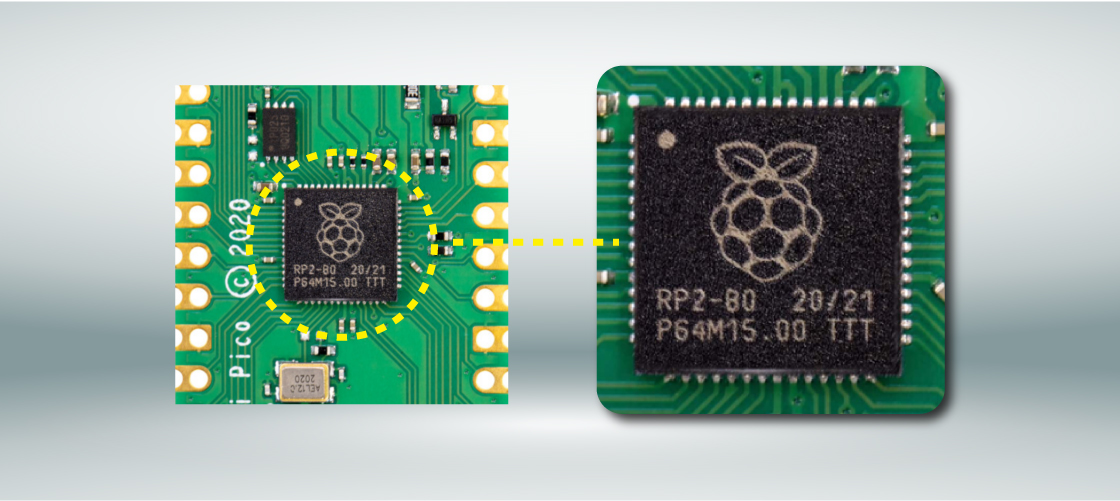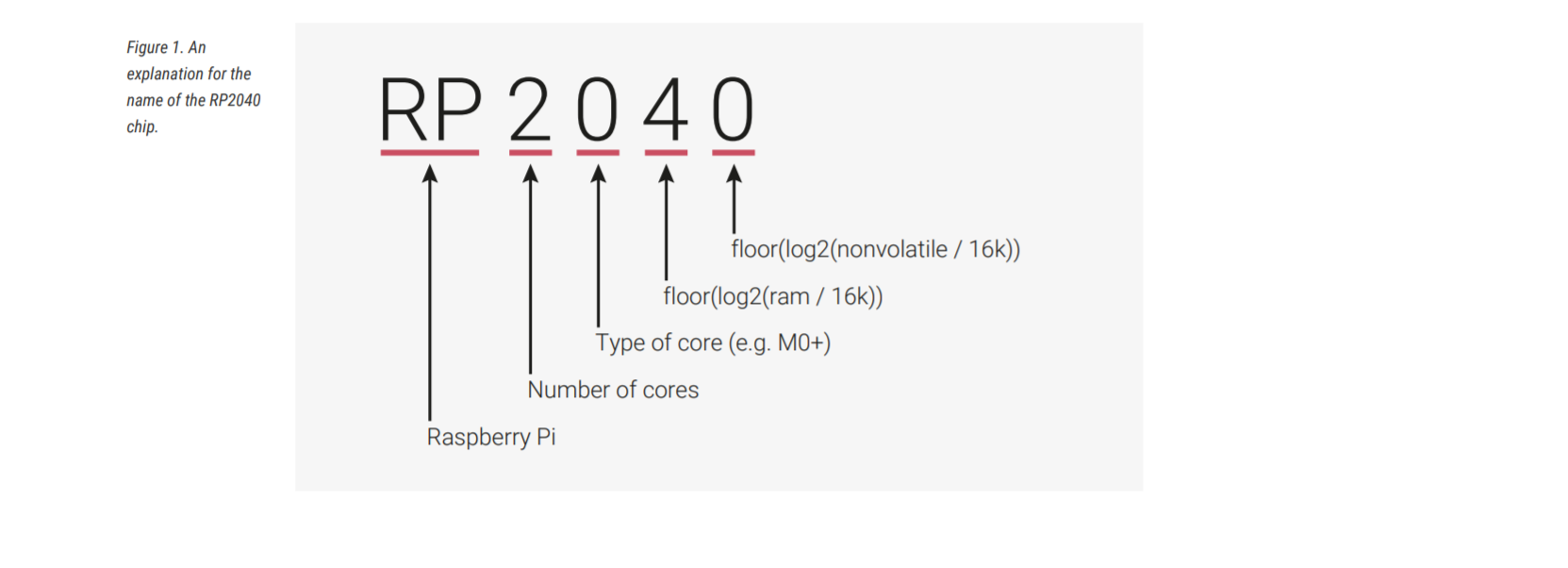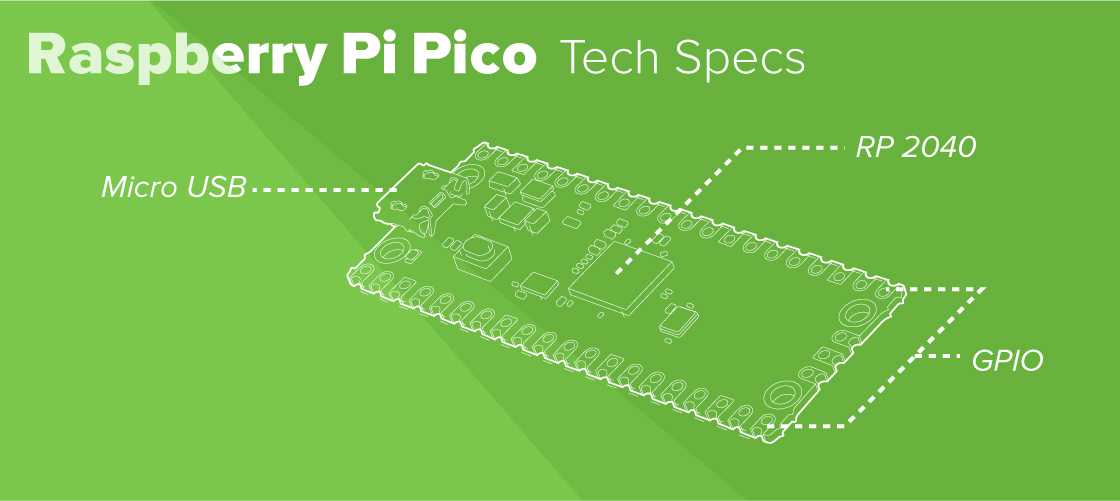-
Raspberry Pi Pico & RP2040: Things You Should Know
01/24/2021 at 03:11 • 0 commentsHere’s everything you need to know about the new board and the RP2040 chip.
The official release video:
How much does the Raspberry Pi Pico cost?
The RPi foundation priced it at 4 US dollars (around £2.9)!
How much does the RP2040 chip cost?
We don’t know yet, but with mass production, we assume it can be as low as somewhere around half a buck.
Where can you get the Raspberry Pi Pico or RP2040?
Currently, none of the resellers are offering RP2040 chips, so you can’t buy it anywhere. According to the foundation, the RP2040 will be made broadly available in the second quarter of 2021.
As for the Pico board, rumor has it that none of those resellers have enough stock, if you buy from any of them, nine times out of ten you will be on backorder. And the estimated wait time? Weeks!
What UCTRONICS is offering
As the first one who brought the camera module to the Arduino platform, Arducam will make sure that all Pico fans will have cameras to play with by the time their board arrives.
And as Arducam’s first-class distributor, UCTRONICS will be listing their exclusive Pico camera series as soon as they come out! We have confirmed with Arducam that the ETA for their Pico camera will be within a month, stay tuned!
In fact, it’s not just Arducam’s cameras, we are also launching a series of sensors and displays along with a variety of other peripherals!
Specs of the RP2040 chip
![]()
- Dual-core Arm Cortex-M0+ @ 133MHz
- 264KB (remember kilobytes?) of on-chip RAM
- Support for up to 16MB of off-chip Flash memory via dedicated QSPI bus
- DMA controller
- Interpolator and integer divider peripherals
- 30 GPIO pins, 4 of which can be used as analogue inputs
- 2 × UARTs, 2 × SPI controllers, and 2 × I2C controllers
- 16 × PWM channels
- 1 × USB 1.1 controller and PHY, with host and device support
- 8 × Raspberry Pi Programmable I/O (PIO) state machines
- USB mass-storage boot mode with UF2 support, for drag-and-drop programming
It’s an effing beast! You can download the full datasheet here.
What does RP2040 stands for?
![]()
The RP2040 chip got its name from its specs, 2 for its two processor cores, 0 for M0+ (the type of core), 4 floors and 0 floors if no onboard nonvolatile storage.
Specs of Raspberry Pi Pico
![]()
- 21 mm × 51 mm form factor
- RP2040 microcontroller chip designed by Raspberry Pi in the UK
- Dual-core Arm Cortex-M0+ processor, flexible clock running up to 133 MHz
- 264KB on-chip SRAM
- 2MB on-board QSPI Flash
- 26 multifunction GPIO pins, including 3 analogue inputs
- 2 × UART, 2 × SPI controllers, 2 × I2C controllers, 16 × PWM channels
- 1 × USB 1.1 controller and PHY, with host and device support
- 8 × Programmable I/O (PIO) state machines for custom peripheral support
- Supported input power 1.8–5.5V DC
- Operating temperature -20°C to +85°C
- Castellated module allows soldering direct to carrier boards
- Drag-and-drop programming using mass storage over USB
- Low-power sleep and dormant modes
- Accurate on-chip clock
- Temperature sensor
- Accelerated integer and floating-point libraries on-chip
You can download the full datasheet here.
The Pico board itself features a temperature sensor, clock, and timer, the best thing about the Pico board is that you can program it in C, C++, or MicroPython. Moreover, you can develop it with literally any of your computers running any operating systems.
Power consumptions of the Pico board
In sleep mode, it takes less than 2 mA / 0.006W.
While in full load, it takes around 90 mA / 0.33W.
It’s crazy low! How low is that? A small rechargeable battery with around 800 mAh capacity can keep the Pico up for weeks!
Raspberry Pi Foundation’s official explanation on microcontrollers
This vid should give you some clue about the chip on the Pico board.
Caroline Dunn’s brief sum-up and her demos
This will give you a little taste of what the Rpi Pico can do.
Jeff Geerling’s...
Read more »
My Projects
My Pages
Projects I Like & Follow
Share this profile
ShareBits
Become a Hackaday.io Member
Create an account to leave a comment. Already have an account? Log In.
 UCTRONICS
UCTRONICS


 Lutetium
Lutetium EasyIoT
EasyIoT julien
julien Kris Temmerman
Kris Temmerman Jeremias
Jeremias nick.r.brewer
nick.r.brewer jay-t
jay-t Brandon Smith
Brandon Smith 8teims
8teims